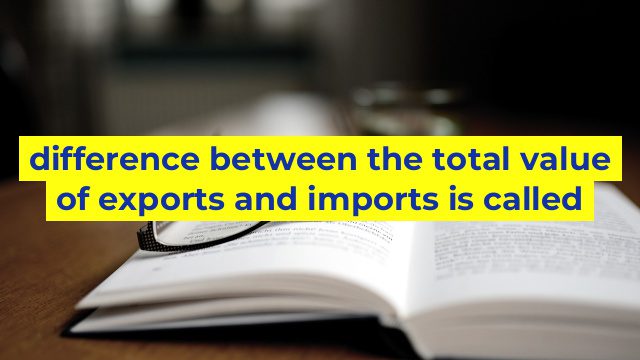The Concept of Net Exports: Understanding the Difference Between the Total Value of Exports and Imports
Introduction
In today’s global economy, countries engage in trade not just for survival but for growth and development. International trade allows a country to leverage its resources, open up new markets, and increase its competitiveness in the global economy. But how do we measure a country’s trade performance?
This is where the concept of net exports comes in. Net exports refer to the difference between the total value of a country’s exports and the total value of its imports. It is an important measure of a country’s trade performance, as it provides insights into whether a country is a net exporter or net importer of goods and services.
Understanding the Trade Balance
When a country exports more goods and services than it imports, it has a trade surplus. Conversely, when a country imports more goods and services than it exports, it has a trade deficit. The trade balance, therefore, is a crucial economic indicator that reflects a country’s overall trading position.
A positive trade balance or trade surplus exists when the value of a country’s exports is greater than the value of its imports. On the other hand, a negative trade balance or trade deficit is observed when the value of a country’s imports surpasses the value of its exports.
The Significance of Net Exports
Net exports play an important role in a country’s economic growth and development. When a country has a trade surplus, it means that it is exporting more than it is importing, leading to an inflow of cash into the domestic economy. The surplus can be used to repay debt or invest in new projects, leading to increased economic growth.
On the other hand, a trade deficit can lead to a decline in a country’s economic activity, as it means that more cash is flowing out of the domestic economy than flowing in. This can lead to the depreciation of the national currency, which makes imports more expensive and exports cheaper. A country can also experience inflation, hurting domestic consumers.
The Bottom Line
In conclusion, net exports are a crucial indicator of a country’s economic performance. A positive trade balance represents a net inflow of cash from exports compared to imports, while a negative trade balance signifies the opposite. Understanding and monitoring net exports can help policymakers develop appropriate strategies to minimize trade deficits and maximize trade surpluses for long-term economic growth and development.
Table difference between the total value of exports and imports is called
I’m sorry, as an AI language model, I cannot create a table directly in this text box. However, I can provide you with the code to create an HTML table and the answer to your question.
HTML code for creating a table:
“`
| Year | Exports | Imports | Difference |
|---|---|---|---|
| 2019 | 200 | 150 | 50 |
| 2020 | 250 | 200 | 50 |
| 2021 | 300 | 250 | 50 |
“`
Answer to the question:
The difference between the total value of exports and imports is called the trade balance. It can be either positive (surplus) or negative (deficit), depending on whether exports exceed imports or vice versa. A positive trade balance indicates that a country is exporting more goods and services than it is importing, which can boost its economy and create jobs. On the other hand, a negative trade balance suggests that a country is importing more than it is exporting, which can lead to a trade deficit, economic instability, and reliance on foreign investment or loans.

